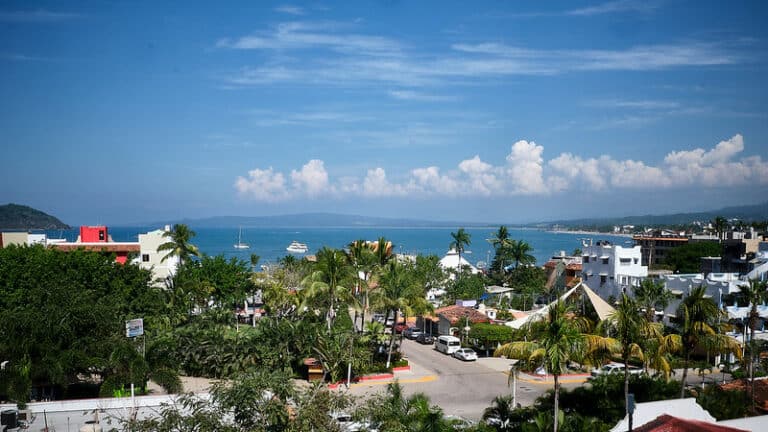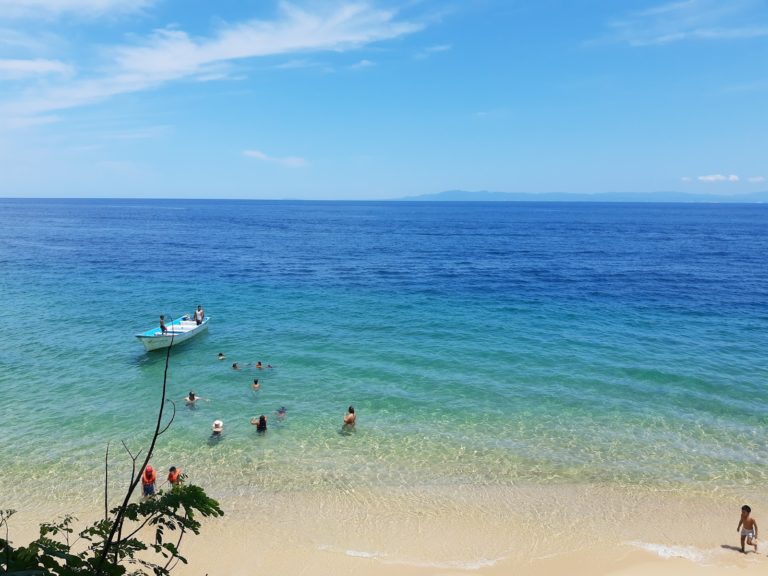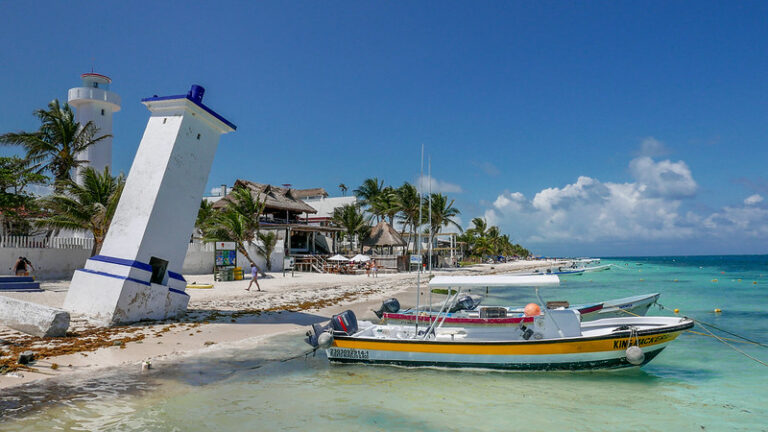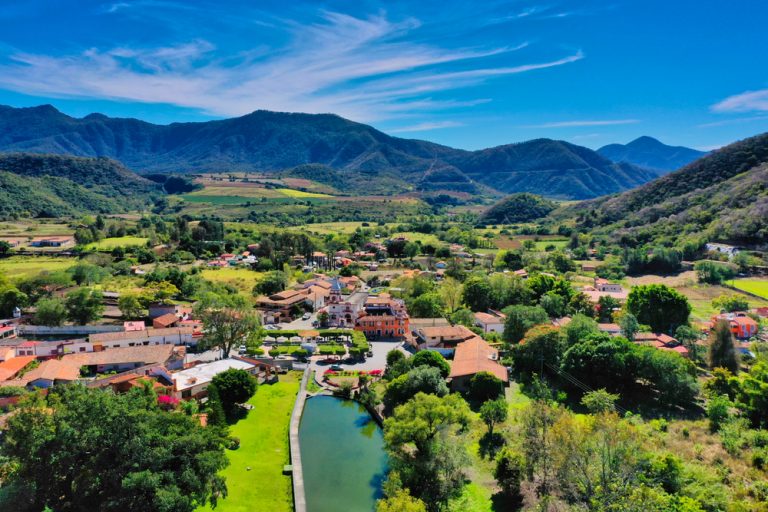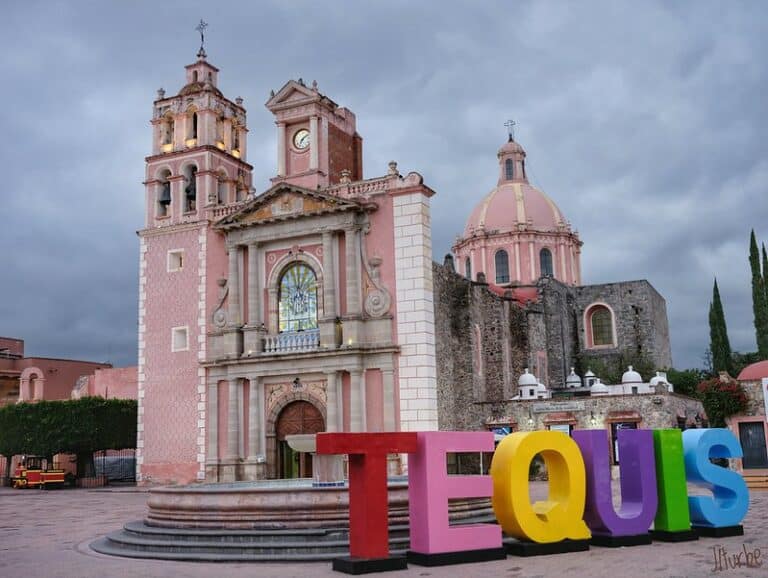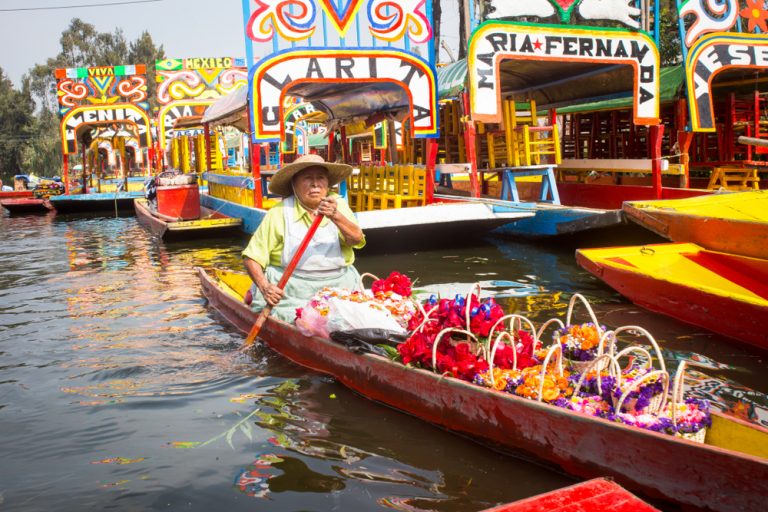Mexico’s Huasteca Potosina and Its Thrilling Secrets
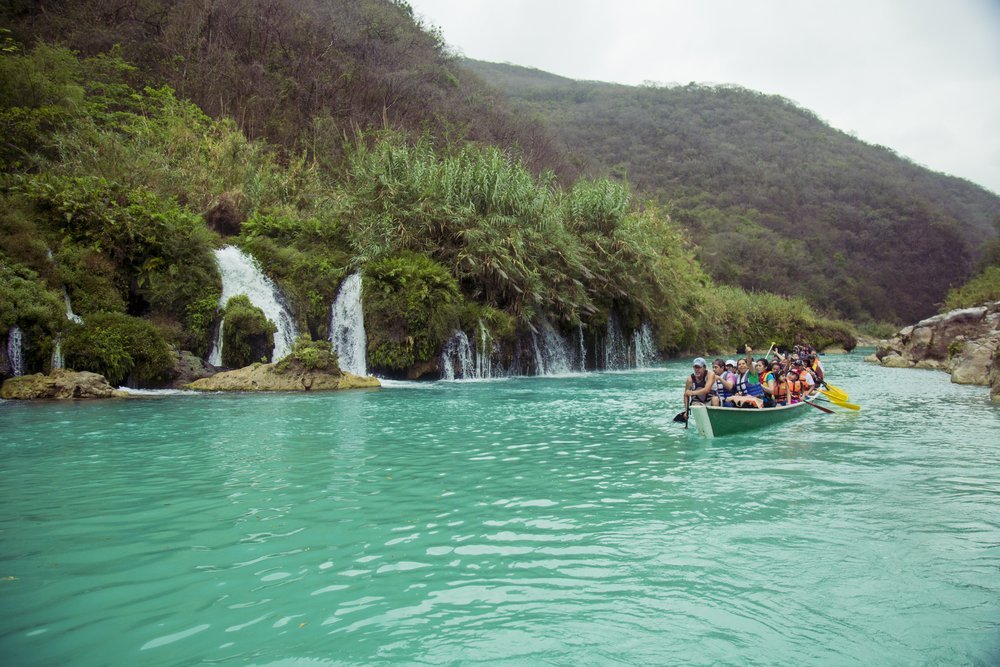
The Huasteca Potosina in Mexico is a synonym of beautiful and immense natural landscapes, splendidly cultivated fields, gorgeous scenic spots, beautiful streams and waterfalls, excellent culinary art, and artistic expressions.
This region borders the Mexican Gulf, which goes deep into the interior of Mexico, covering part of the states of Veracruz, Hidalgo, Tamaulipas, San Luis Potosi, and to a lesser extent, Puebla and Queretaro.
Therefore, it is usually referred to as the Huasteca Veracruzana, Tamaulipeca, Hidalguense, Poblana, Queretana and Potosina.
It was a territory populated by several pre-Columbian civilizations, the most important being the Maya and the Huasteca, closely related.
The Huastecan people still live in the region conquered by their ancestors, preserving some of their cultural traits.
Their language, also called Tenek, is of Mayan origin and is the only one that has survived among its linguistic family members.
The Huastecans were brilliant potters from their beginnings, which were passed down from one generation to the next.
Other preserved cultural manifestations are the Huastecan huapango and some peculiarities of the dress.
Where is the Huasteca Potosina, Mexico?
The Huasteca Potosina comprises 20 municipalities with territories belonging to the ancient Huasteca civilization in the current state of San Luis Potosi.
Among these municipalities are Ciudad Valles, Xilitla, Aquismón, Tamasopo, Ébano, and Tamuín.
However, each municipality has its charm, which is worth knowing.
The Huasteca Potosina is a predominantly mountainous region, with abundant vegetation, fertile land, and spaces crossed by rivers and many streams that form beautiful waterfalls and countless pools of fresh, crystalline waters.
In the foothills of its mountains and caves, tourists have everything they need to practice their favorite extreme sports.
At the same time, each town in the region offers some particular attraction for the visitor.
Where to start the tour?
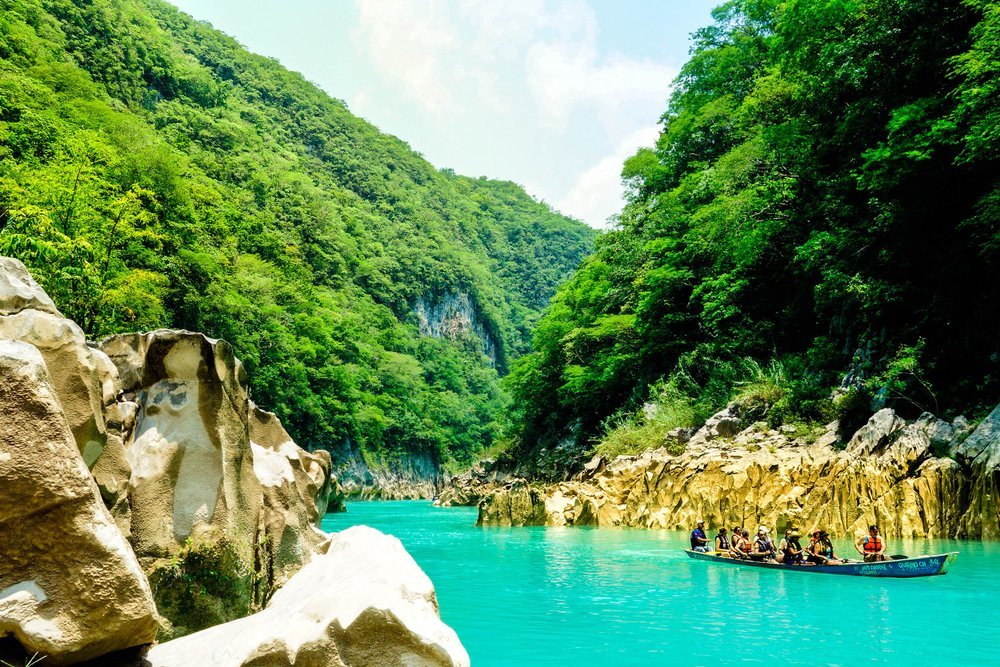
You can start in any town, staying overnight in one of the many hotels and hostels along the way as you travel through the territory.
Ciudad Valles has the best infrastructure of tourist services in the Huasteca Potosina.
If you prefer to settle in a place in the Huasteca and organize and execute a tour plan, it is best to stay in Ciudad Valles, the largest town in the region, considered a gateway that gives convenient access to any Huastecan municipality.
Huasteca Potosina: Ciudad Valles
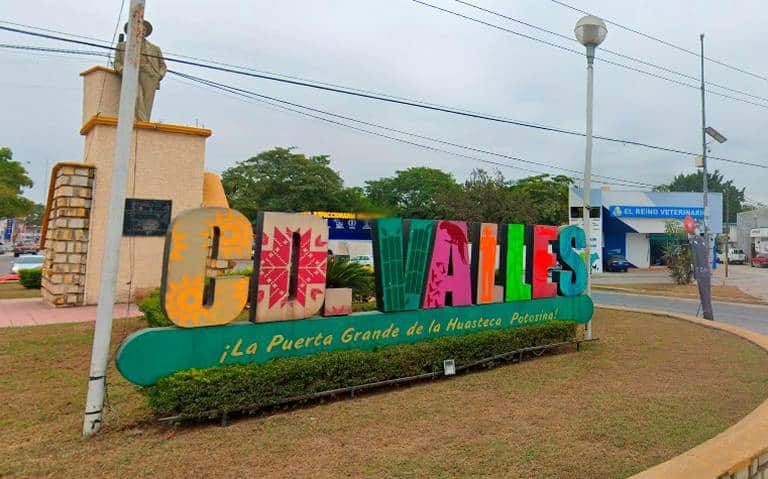
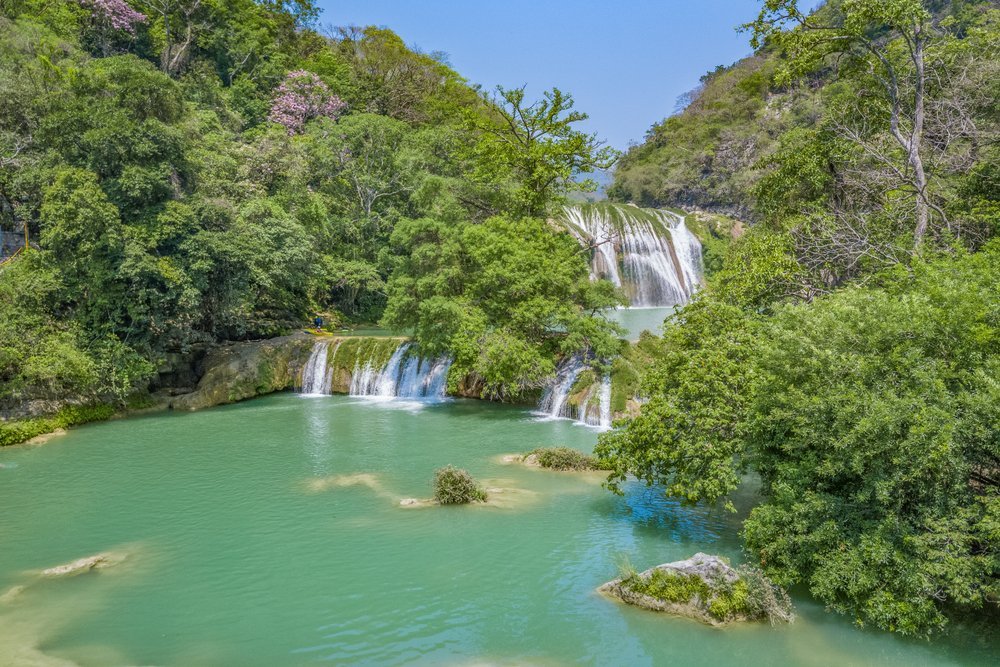
The Micos Waterfalls stand out among the natural places in Ciudad Valles.
They are staggered waterfalls, which allow extreme sports enthusiasts to practice their activities, providing endless shots of adrenaline in a paradisiacal environment.
The local guides provide an excellent orientation to make the tours and activities safe.
In Taninul, there are sulfur hot springs and temazcal baths.
The Regional Huastecan Museum of Ciudad Valles offers a complete overview of the Huastecan culture through a collection of figures, seals, representations, winches, and other pre-Hispanic pieces.
Among the objects stand out a representation of the god of the wind in a shell pectoral and an ear of corn with a human head.
Also on display are some knives used by the Huastecans for sacrifices and some of their work tools, such as axes and knives.
Where to stay in Ciudad Valles
- Quinta Mar has a nice swimming pool and occasionally they welcome their guests with a typical dance to introduce them to the Huasteca culture. They offer an abundant breakfast buffet
- Hotel Valles has a beautiful colonial-style building, surrounded by gardens and Huastecan greenery
- Hotel Pina is a centrally located and economical establishment, which users highlight for its cleanliness and functionality
- Other options are Sierra Huasteca Inn, Mision Ciudad Valles and Hotel Spa Taninul
What are the best places to eat in Ciudad Valles?
- La Leyenda is a cozy restaurant where you can enjoy Huastecan food and other international dishes. Among its specialties, La Leyenda’s customers recommend the heart of palm ceviche
- La Bella Napoli is an Italian food restaurant, with spaghetti with traditional sauces and a special pizza called serrana. The Neapolitan sauce honors the name of the place
- Rincón Huasteco is a restaurant whose specialty is grilled meat, chorizos, kidneys, and other cuts, served in an iron bowl with an assortment of sauces
- El Palmar handmade ice cream is famous in the city
Visit Coxcatlán
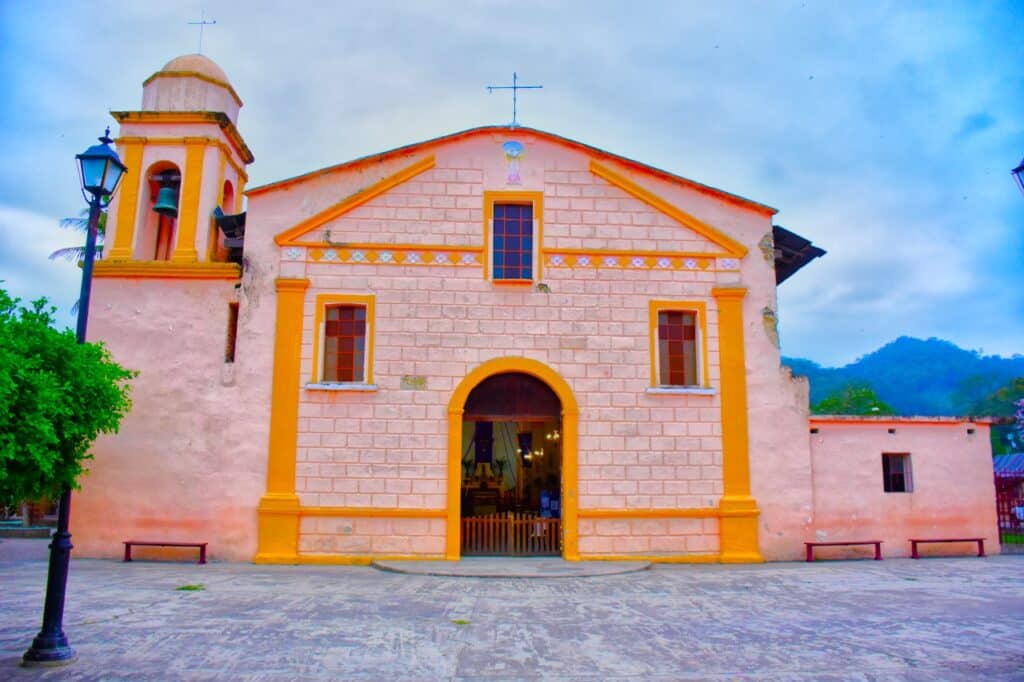
This municipality of Huasteca Potosina Mexico is south of San Luis Potosí and is noted for its scenery.
Although it doesn’t have a large river, it has several streams, one of which, the Suchiaco, crosses the town.
The town’s main building is the Church of San Juan Bautista, a temple of gothic lines built in gray stone.
The artisans of Coxcatlán are very skilled at making clay pots and bejuco baskets.
Visit Aquismon in Huasteca Potosina
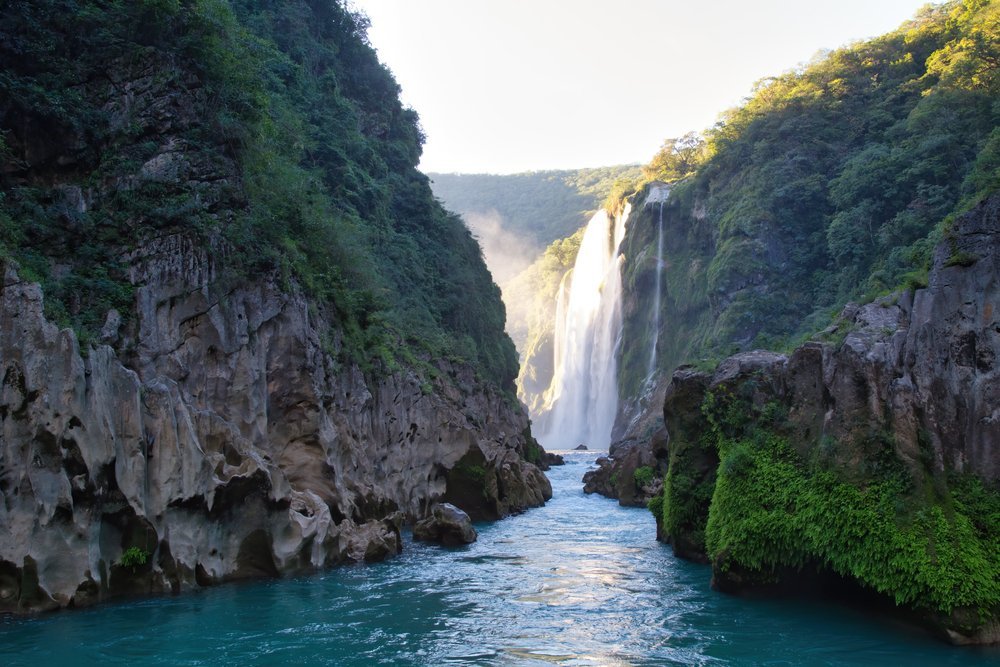
The municipality of Aquismon is a mandatory stop on any trip to the Huasteca Potosina to admire the Sótano de la Golondrinas.
This vertical cavern is considered the most interesting of its kind on the planet.
This cave is frequented by tourists, ornithologists and speleologists.
In the enormous cave, 500 meters deep, thousands of swifts, very similar to swallows, enter and exit in curious and organized formations, emitting their particular sounds.
What else is there in Aquismón?
The largest waterfall in the Huasteca Potosina, Tamul, is in Aquismón. It is a crossroads of three Potosino rivers, as the 105-meter waterfall belongs to the Gallinas River until it cascades into the Santa Maria River, which flows below.
From the point where the waters meet, the current, more abundant, is called the Tampaón River.
From the community of Tanchachín, boat rides depart to admire the waterfall and the biodiversity present in the one-hour tour.
Attractions in Axtla de Terrazas
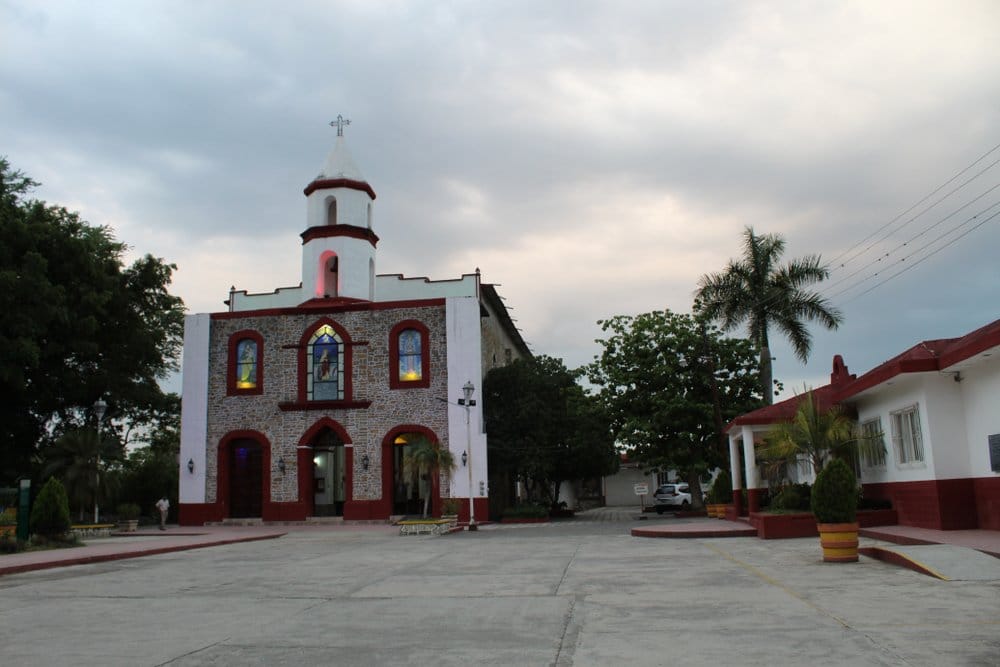
It is a municipality with well-kept public green areas and a beautiful church where Santa Catarina is venerated.
Traditional fiestas are celebrated on November 25 with religious events, typical dances, and lots of fun.
The Tamancillo River flows near the town, where the villagers go to cool off on hot days.
The village of Aguacatitla is very picturesque and cozy. Suitable wooden washbasins are only made in a few places, and one of them is Axtla de Terrazas.
Ebano in the Huasteca Potosina: A historical site
Ebano is a municipality with some important historical events in Mexico’s past.
The Huasteco Indians at the beginning of the 20th century must have been amazed when on April 3, 1904, saw that from the depths of the earth, a strong gush of a thick black liquid began to come out.
Ebano had become the cradle of the Mexican oil industry.
Today Mexico is an oil country of world importance, and it all began in the Huasteca Potosina more than a century ago.
The oil industry in Ebano
Ebano was the cradle of Mexican trade unionism, although the first union recognized by the company, the Sindicato Católico “Pio XI” was openly a bosses’ union.
The oil transnationals exploited workers everywhere, and Ebano was no exception.
The Ebano battle
During the Mexican Revolution, in 1914, there was a conflict between the constitutionalists (supporters of Venustiano Carranza) and the conventionists (supporters of Pancho Villa).
The Carrancistas wanted to take over the port of Tampico to receive supplies, and the Villistas tried to prevent them from doing so.
Ebano was a strategic site on the way to the port, and it was there that the two forces clashed. Another historical fact is that this was the first time an airplane was used in a war event in Mexico.
In the end, the Villistas retreated, and the Carrancistas reached Tampico.
El Naranjo
This municipality is located in the central-western part of San Luis Potosí. Its mainstream, the El Naranjo River, forms beautiful waterfalls that are the place’s main attractions.
Among these waterfalls stand out El Naranjo, El Meco, Salto de Agua, and Minas Viejas; this last one falls in two waterfalls that seem to be twins during one time of the year.
Huehuetlán
The municipality of Huehuetlán is located in the south of the state, with its lands bathed mainly by the Huichihuayán River and its tributaries.
The cave or grotto of the Four Winds is a place of difficult access and sacred to the Huastecans, who make offerings to a stalactite that, according to legend, takes the form of the goddess Tlazolteotl.
Another natural attraction of Huehuetlán is the Cañada de Tecomón.
The temples of San Diego de Alcalá and Santiago de Ayala stand out.
Matlapa
This municipality of the Huasteca Potosina in Mexico is a paradise for tourists who like contact with nature in its primitive state and are least concerned about an air-conditioned hotel room.
Matlapa is a fundamentally mountainous municipality whose mainstream, the Tancuilín River, and a myriad of streams and springs, form pools in which it is a delight to submerge.
Enjoying the water and observing nature are the main things to do in Matlapa.
Puente de Dios Waterfall at la Huasteca Potosina Mexico
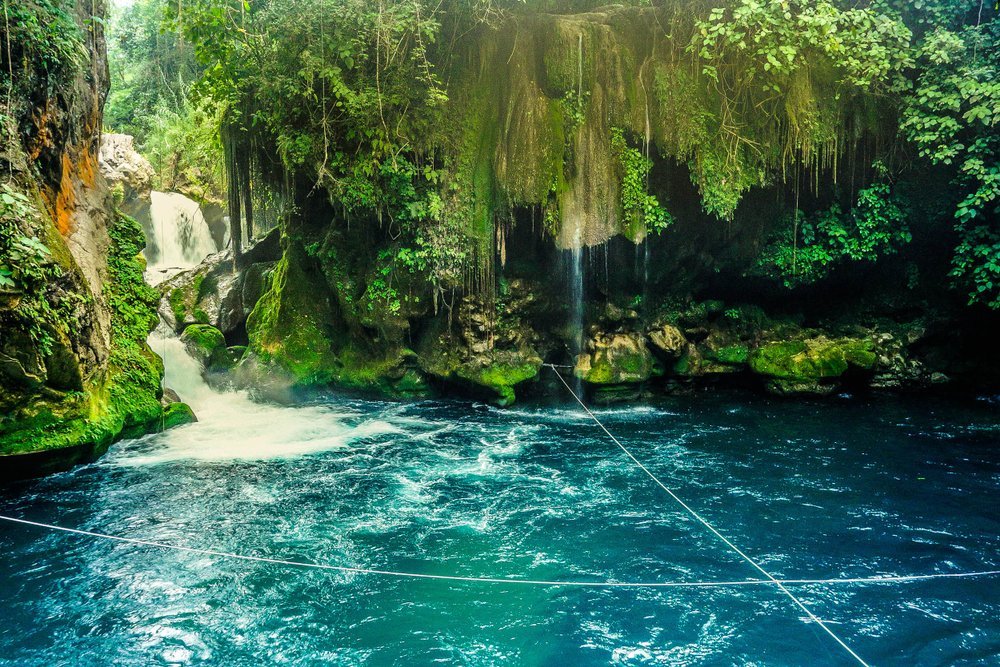
Tamasopo’s main attraction is the Puente de Dios waterfall.
The waterfalls that bear the municipality’s name are a single stream that divides into several jumps when falling, separated by a few meters.
The natural spa they form is delightful, and camping is available.
Puente de Dios (God’s bridge) is another waterfall that falls at several points to an exquisite turquoise blue pool.
In Puente de Dios, there is a cavern where the sun’s rays beautifully illuminate the rock formations inside.
Can I stay in Tamasopo?
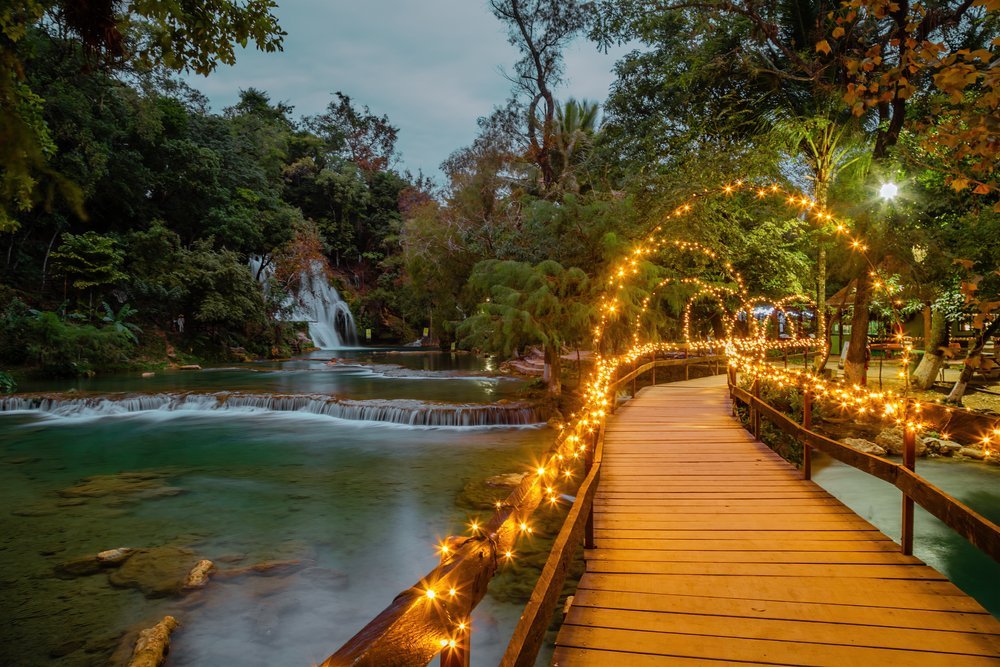
In the center of Tamasopo, 5 minutes from the waterfalls, is the Hotel Cosmos, with excellent reviews.
The Raga Inn, at 510 Los Bravo Street, is known for its comfortable simplicity and cleanliness.
Another lodging option in Tamasopo is the Hotel Campo Real.
Archaeology in Tamuín
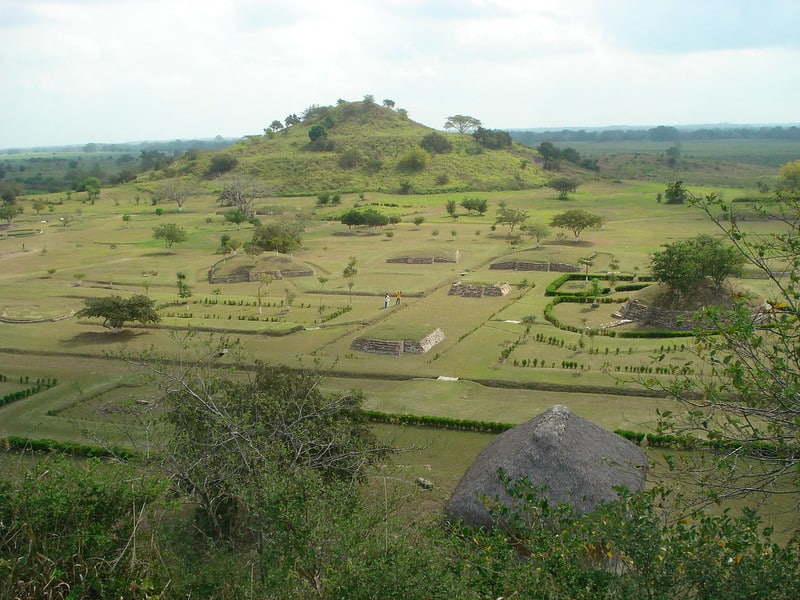
Tamuín’s attractions are mainly archaeological, with two sites standing out.
The pre-Hispanic site of Tamtoc could have been the pre-Columbian capital of the Huasteca region.
It is a monumental complex with buildings, rooms, plazas, and works of art, surrounded by beautiful vegetation.
This 2,500 year old and exquisitely worked figure is one of the great jewels of Huastecan art.
Among the structures are Paso Bayo, El Tizate, and El Corcovado, a circular area believed to have been a center for meetings and trade; and La Mujer Escarificada, a female sculpture also known as the Venus of Tamtoc.
The other crucial pre-Columbian site in Tamuín is El Consuelo, near the municipal capital on the road to Tampico.
The place was built by the Huasteca civilization shortly before the arrival of the Spaniards and was inhabited in the times of Cortés.
The main piece found at El Consuelo is El Adolescente Huasteco, a masterpiece of pre-Columbian Mesoamerican art, which appears to be an image of a young Quetzalcoatl.
Murals and very well-worked ceramic pieces have also been found.
Tancanhuitz de Santos
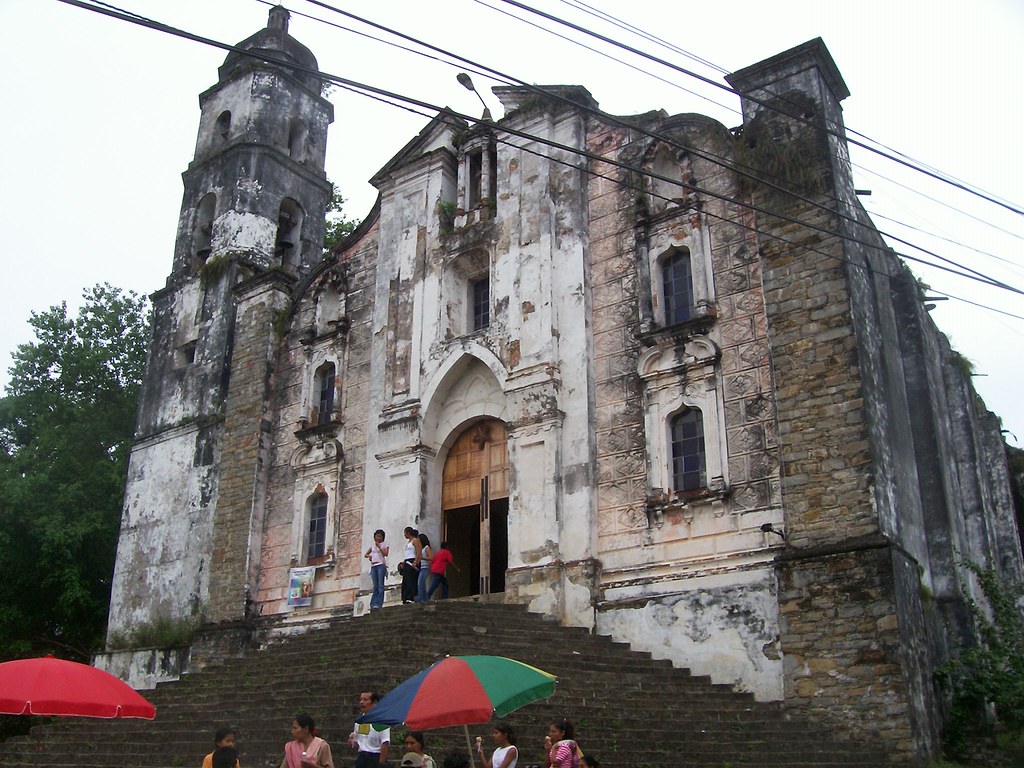
One of the outstanding contributions of this highland municipality to Mexican culture is the Voladores de Tamaletóm, which predate those of Papantla.
However, it was the latter that gained international fame.
The craftswomen of Tancanhuitz make beautiful tangles and huipiles with multicolored thread.
The town’s festivities honor San Miguel Arcángel and are celebrated between September 25 and 29.
The town’s main attractions are the Church of the 149 Steps, the Cave of Los Brujos, the Coy River, and La Herradura Dam.
Tanlajas
Tanlajás has a temple that calls attention at first glance because the tower is considerably separated from the main structure.
This does not prevent them from celebrating Santa Ana between June 25 and 26 with all the enthusiasm and colorfulness of the festivities of the patron saint of Potosí.
Other attractions of Tanlajás are its lakes, Tabasaquiche and Lagartos, and the Choy River.
What to see in Tanquián de Escobedo?
This municipality of San Luis Potosí on the border with the state of Veracruz is bathed by the waters of the Moctezuma River, forming beautiful lakes, among them El Tecolote, El Mezquite, and Unión.
Another tourist attraction is its archaeological huasteca zone. They celebrate their patron saint festivities on March 19, in honor of San José, with religious activities and typical dances.
Xilitla, San Luis Potosi
This municipality of the Huasteca Potosina Mexico is known internationally by the Edward James Las Pozas Surrealist Garden.
It is a natural and artistic space in which many beautiful constructions and extraordinary sculptures are integrated into the paradisiacal landscape of trees, flowers, grass, streams, and pools.
Another impressive attraction in Xilitla is the Sótano de Huahuas, a vertical cavern 500 meters deep with a bird sanctuary considered a natural wonder.
The vast and unique cave is the habitat of several bird species. Also, in Xilitla, you can go mountaineering in the massif of La Silleta and caving enthusiasts can visit the cave of El Salitre.
The Surrealist Garden in Xilitla
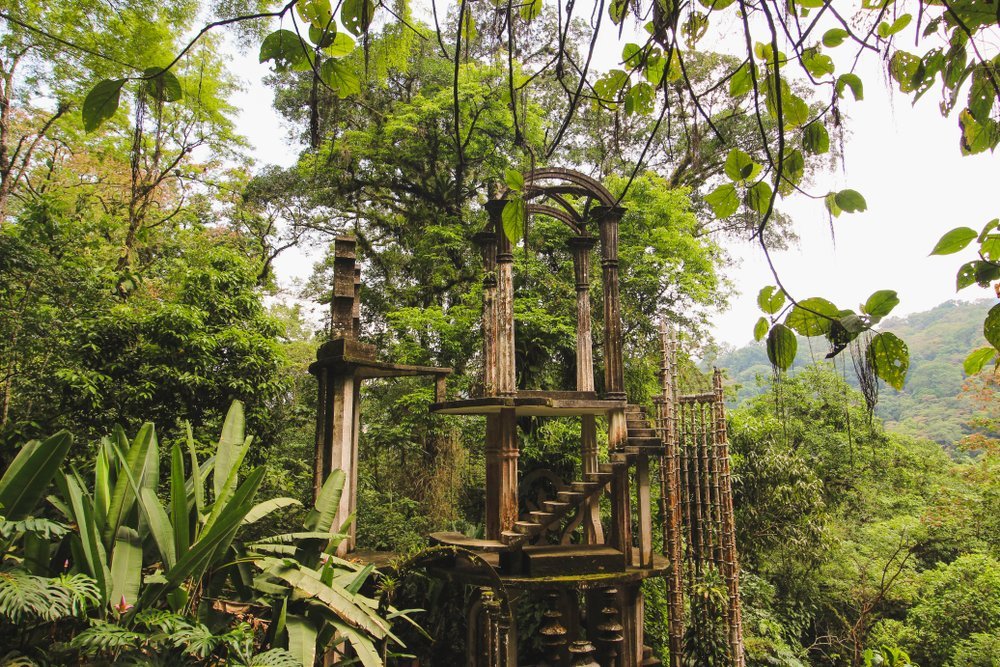
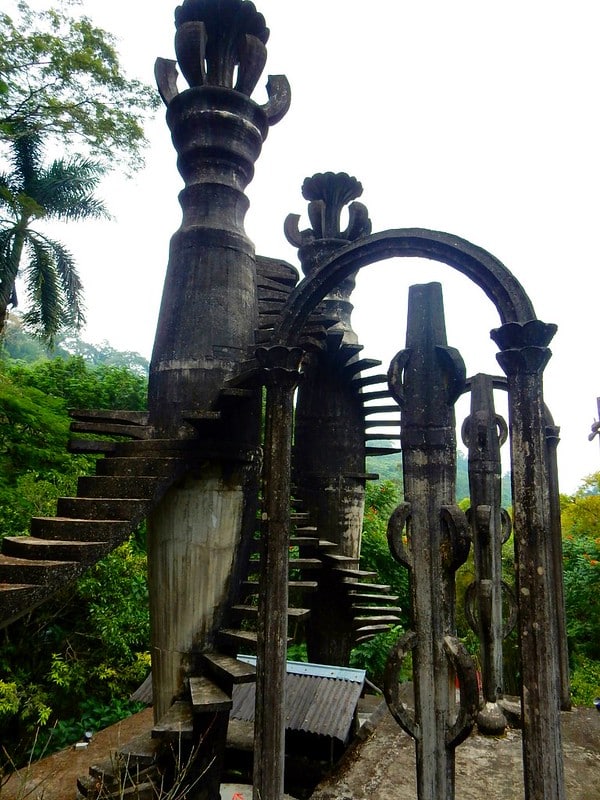
Again, this garden designed and built by Edward James, a British aristocrat, artist, and millionaire, has 36 constructions and sculptures of grand format, among which stand out:
- The structure of three floors that turn into five
- Stairway to heaven
- The bedroom with a whale-shaped roof
- The house of Don Eduardo
- The house of the peristyles
- The aviary
- The summer palace
The works give the impression of being “unfinished” due to the artistic criterion of the author that every piece of art must remain incomplete for someone else to continue it.
Why did a British aristocrat think of making this garden in Mexico?
Edward James had a large fortune inherited from his father.
He was also a surrealist poet and artist, a friend of great masters trying to make a name for themselves, such as Dalí, Picasso, and Magritte.
He wanted to live in the Garden of Eden on Earth, and a friend recommended that he build one in Mexico.
James erected the garden in the 1960s and died in 1984, leaving as his heirs the Mexican family that helped him build it.
The Potosi government and private organizations later purchased the garden to make it available to the public.
Other things to see in Xilitla
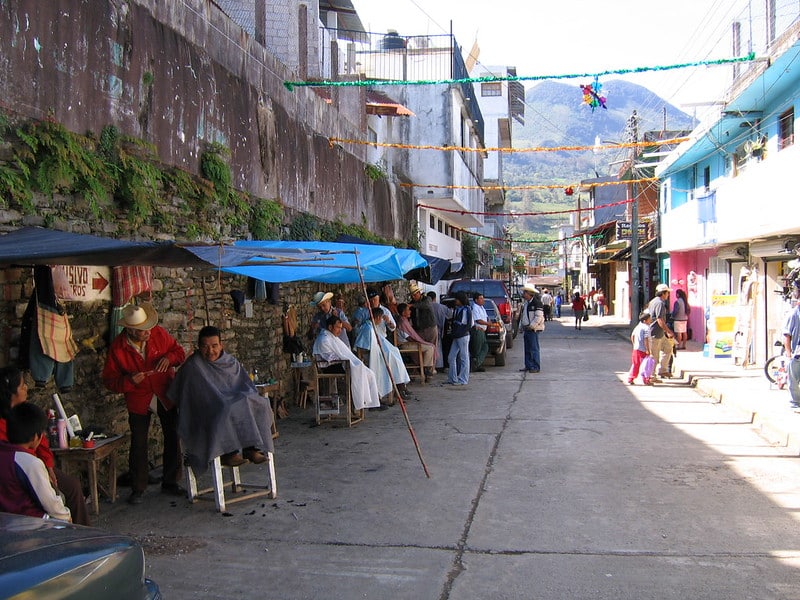
In the municipal capital of Xilitla, there is a church and former Augustinian convent from the middle of the 16th century, which is one of the great monuments of San Luis Potosi since it was the first religious building in the state.
Also, next to the former home of Plutarco Gastélum, Edward James’ main Mexican collaborator, is the El Castillo Inn and museum.
The exhibition includes photographs and personal documents of the artist and some of the tools used to construct the prodigious garden.
Huasteca Potosina, Mexico: The Food!
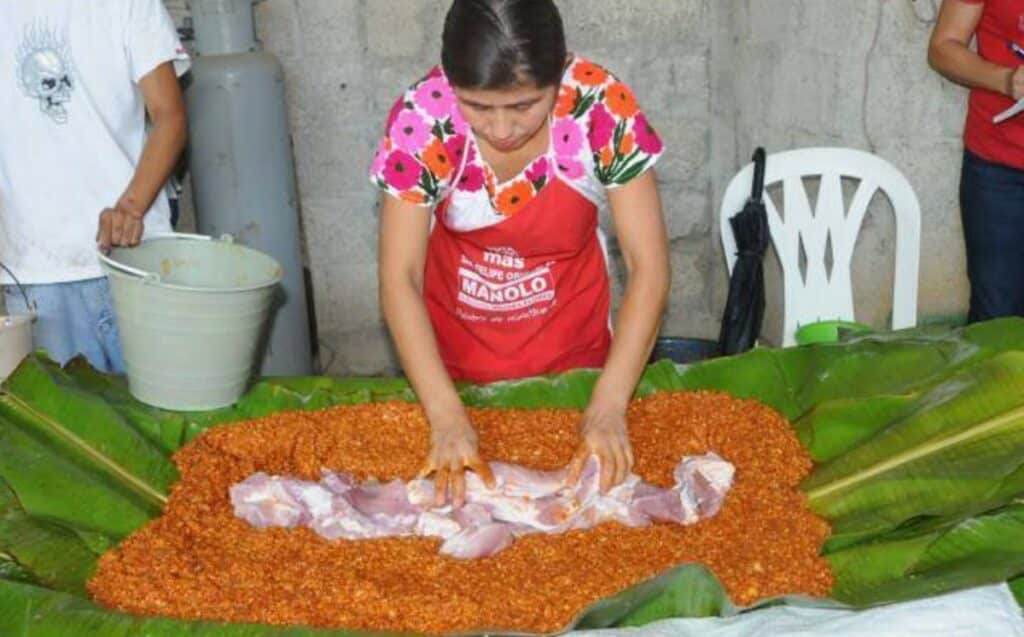
A 30-kilo tamale is enough for a busload of tourists. This is the zacahuil, the typical Huastecan tamale, which can measure two meters long.
It is enormous and delicious since its filling is a mixture of meats, usually pork loin and chicken, very well seasoned with chiles and other ingredients.
Slow cooking, wrapped in banana or plantain leaves, in a wood oven, is how to make an authentic zacahuil, the maximum gastronomic expression of the Huasteca Potosina.
Other regional dishes are the enchiladas huastecas, the xochitl broth and bocoles.
The Huastecos’ traits
- The Huastecos are recognized as an ethnic group, regardless of the Mexican state in which they live
- Indigenous people are not easy to census, but it is estimated that more than 200,000 Huastecos are living in their ancestral territory
- They are brown, short, very strong, and healthy, with silky black hair
- Since immemorial times, the Huastecans have made a living from agriculture and raising domestic animals
- They grow corn and other grasses, coffee, beans, peanuts, avocados, bananas, and sugar cane, among the most important crops
- They are also lumberjacks, selling the logs to sawmills. Huastecan women are extraordinary potters and very skilled embroiderers
Huastecan music
The Huapango dance and music or sones huastecos have transcended the Huasteca Region to become a musical manifestation of national presence in Mexico.
Huapangos are not as old as the Huastecan civilization, since they emerged during the 19th century, but they constitute a rhythm with Spanish, African, and indigenous features.
The Huasteco trio features huapanguera guitar, jarana huasteca, and violin, with zapateo and improvisation rounding out the magnificent musical and artistic production.
Huasteca Potosina, Mexico: Conclusion
As you’ve learned today, the enchanting landscapes and exhilarating adventures of Huasteca Potosina are almost endless.
From its majestic waterfalls cascading into crystalline pools to the labyrinthine caves waiting to be explored, every corner of Huasteca Potosina holds a thrilling secret waiting to be uncovered.
Beyond the adrenaline rush of cliff-jumping into turquoise waters or rappelling down towering cliffs, lies a deeper connection to nature and culture that permeates every experience in this region.
The lush jungles teeming with diverse wildlife, the mystical rivers carving through limestone canyons, and the vibrant traditions of the indigenous Huastec people all contribute to the rich tapestry of Huasteca Potosina.
More than just a destination, it’s a sanctuary for the soul, a playground for the adventurous, and a testament to the awe-inspiring beauty of our planet.

